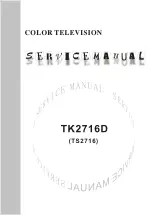
SAFETY NOTES
SECTION 1
RM-GD020, CD013
RM-GD020
KDL-32, 40, 46 CX523
KDL- 22, 32, 40, 46 CX520
1-1. Caution Handling of LCD Panel
When repairing the LCD Panel, make sure you are grounded with a wrist band.
When repairing the LCD Panel on the wall, the panel must be secured using the 4
mounting holes on the rear cover.
1) Do not press the panel or frame edge to avoid the risk of electric shock.
2) Do not scratch or press on the panel with any sharp objects.
3)Check all control knobs, shields, covers, ground straps and mounting
hardware have been replaced. Be absolutely certain you have replaced all
the insulators.
4) Look for unauthorized replacement parts, particularly transistors that were
installed during a previous repair. Point them out to the customer and
recommend their replacement.
3) Do not leave the module in high temperature or in areas of high humidity for
an extended period of time.
4) Do not expose the LCD panel to direct sunlight.
5) Avoid contact with water. It may cause short circuit within the module.
6) Disconnect the AC power when replacing the backlight (CCFL) or
inverter circuit. (High voltage occurs at the inverter circuit at 650Vrms)
) Al
l
h LCD
l i h
f l h
i l
5) Look for parts which, though functioning show obvious signs of deterioration.
Point them out to the customer and recommend their replacement.
6) Check the line cords for cracks and abrasion. Recommend the replacement
of any such line cord to the customer.
7) Check the antenna terminals, metal trim, metallized knobs, screws and all
other exposed metal parts for AC leakage. Check leakage test as described
7) Always clean the LCD panel with a soft cloth material.
8) Use care when handling the wires or connectors of the inverter circuit.
Damaging the wires may cause a short circuit.
9) Protect the panel from ESD to avoid damaging the electronic circuit
(C-MOS).
10) During the repair, DO NOT leave the Power On or Burn-in period for more than
1 hour while the TV is face down on a cloth
next.
8. For safety reasons, repairing the Power board and/or Inverter board is prohibited.
1-3. Leakage Test
The AC leakage from any exposed metal part to earth ground and from all exposed
metal parts to any exposed metal part having a return to chassis must not exceed
1 hour while the TV is face down on a cloth.
metal parts to any exposed metal part having a return to chassis must not exceed
0.5mA (500 microamperes).
Leakage current can be measured by any one of the three methods:-
1. A commercial leakage tester such as the SIMPSON 229 or RCA WT-540A.
Follow the manufacturers instructions to use those instructions.
2. A battery-operated AC milliampmeter. The DATA PRECISION 245 digital
multimeter is suitable for this job
multimeter is suitable for this job.
3. Measuring the voltage drop across a resistor by means of a VOM or battery
operated AC voltmeter. The 'limit' indication is 0.75V so analog meters must
have an accurate low voltage scale. The SIMPSON'S 250 and SANWA
SH-63TRD are examples of passive VOMs that are suitable. Nearly all
battery operated digital multimeters that have a 2 VAC range are suitable.
(see Figure 1.)
Figure 1 TV is face down on a cloth during reparing
1-2. Safety Check-Out
After correcting the original service problem, perform the following safety checks
before releasing the set to the customer:-
1) Check the area of your repair for unsoldered or poorly soldered connections.
(
g
)
Figure 1. TV is face down on a cloth during reparing
Check the entire board surface for solder splashes and bridges.
2) Check the interboard wiring to ensure that no wires are pinched or contact
high-wattage resistors.
Figure 2. AC voltmeter to check AC leakage
-3-
www.eletronicageral.com.br





































